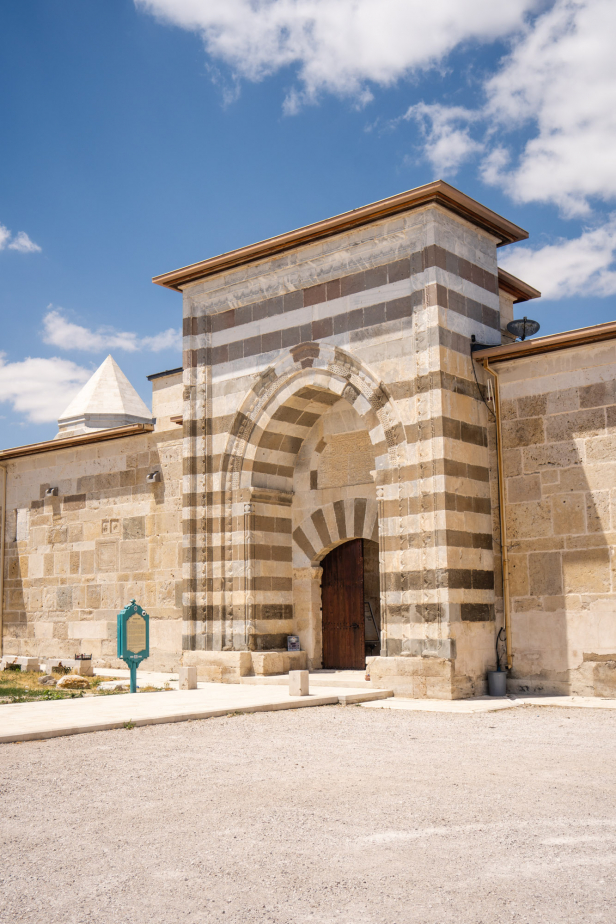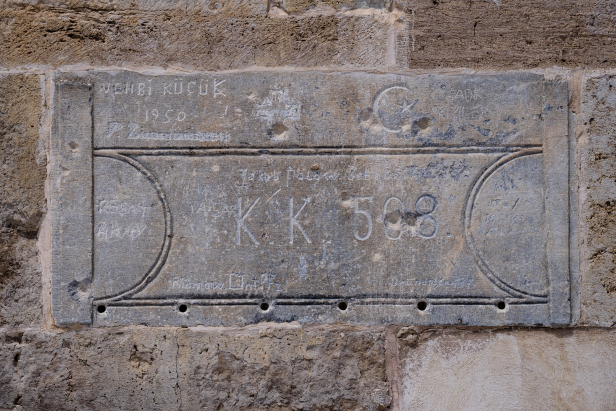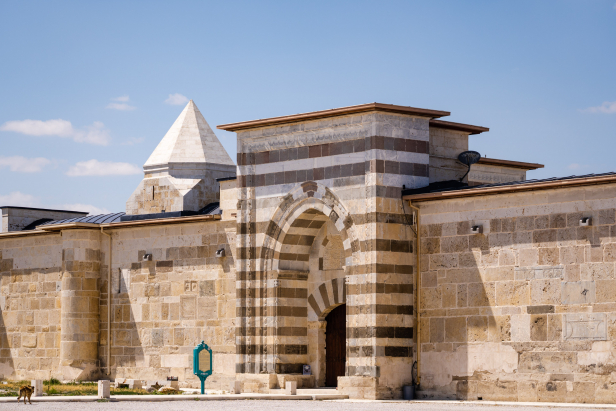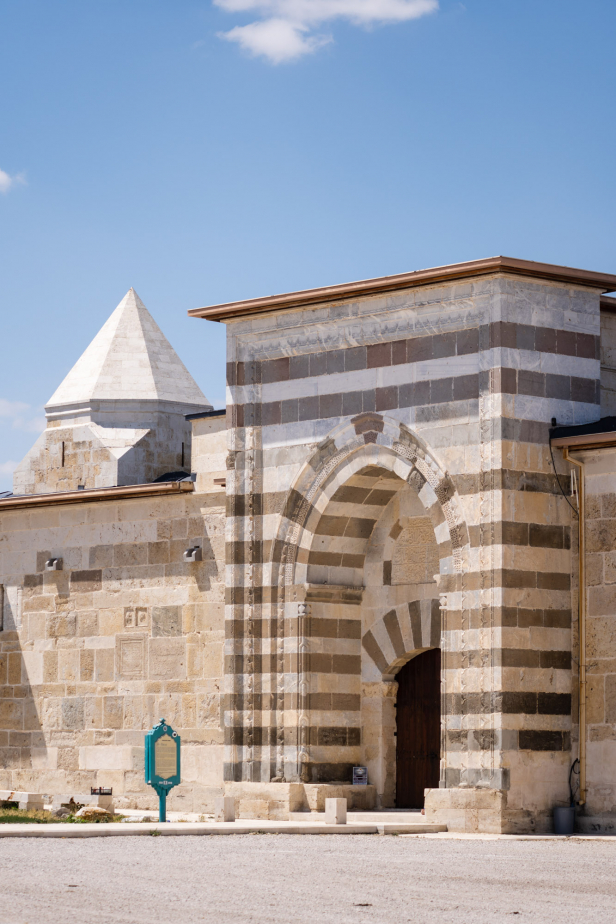Zazadin Han
Zazadin Han
/ By Josh
Cost: 10TL
Great for: Caravanserai, Han, Travelling Salesmen, Silk Road, Seljuk History, Caravan, Medieval Motels
From the 11th to the end of the 13th century the city of Konya was the capital of the Seljuk Sultanate of Rum and one of the most important cities in Anatolia. Seeing the riches to be made by controlling trade, the Seljuks shifted the existing trade routes to center on their capital at Konya, making it a hub along the greater Silk Road trade route, from which numerous other trade routes ran out through the region.
To establish this route, make it safe and even comfortable for merchants traveling along it, the Seljuks built Caravanserai (also known as a han or khan), large fortified inns, at regular intervals to serve the needs of caravans and give them secure places to spend the night in otherwise remote and dangerous areas.
One of the first stops leaving the city of Konya, on the road east was the especially grand Zazadin Han, built only 20 kilometers from the center of Medieval Konya. This road ran through the heart of Anatolia, across the plain of eastern Konya, to Aksaray, on to Cappaodocia then east into Central Asia and beyond, making it one of the most important in the region for the over-land flow of goods.
Continuing on from Zazadin Han eastward, a traveller would have arrived at Obruk Han, Sultan Han, then the city of Aksaray.
Thanks to the fact that the inscription stones of this caravanserai have survived, we know that Zazadin Han was built by Sadettin Köpek, vizier to Seljuk Sultan Alaeddin Keykubad, in the year 1235. The name Zazadin comes from the local pronunciation of the building’s founder Sadettin.
Little is known about the early life of Sadettin, or Sa’d al-din, though he went on to become an accomplished architect before becoming an emir, or nobleman, in the Seljuk court. He was known for being ruthless against his rivals, killing them off to a point where his ambition undermined the Seljuk Sultanate. Eventually his ambitions got the best of him and he was beheaded by the sultan. The character has more recently become famous for his place in the Diriliş: Ertuğrul TV show which centers on Ertuğrul, father of Osman, founder of the Ottoman Dynasty.
Zazadin Han was already in a state of ruin by the 19th century but has undergone restoration a couple of times in recent years with the most recent being in 2017. In 2019 Zazadin Han was opened to the public as a museum with knowledgeable staff ready to show you around and explain the inner workings and functions of a Seljuk Caravanserai.
Why Visit?
Set in the midst of a particularly flat and dusty corner of the Konya plain, Zazadin Han appears vast and remote, undoubtedly a welcome sight for those travelling through this barren land. Its design fits the classic layout of a Seljuk Caravanserai with a couple peculiarities. Zazadin Han consists of two main portions: an outer courtyard and an inner covered hall. Arriving at the Han you are first met with a long and irregular wall of pale stone, with square and round turrets along its length. While many of the stones are bare, many are spoila, recycled stones from an earlier Byzantine settlement, bearing Greek motifs and crosses.

As with all grand Seljuk Caravanserai, and Seljuk buildings in general, the most striking part of the building is the ornate entrance. The crown portal of Zazadin Han lacks the ornate vault of muqarnas, opting instead for a simple segmental arch nested within a higher pointed arch (see Sultanhan, Beyşehir Ismail Ağa Madrasah, or Karatayhan for examples of crown portals with muqarnas). The strikingness of the entryway is instead due to the fine use of black and white layers and carved relief patterns.
What makes the entrance of Zazadin Han so unusual is its location on the south side of the caravanserai rather than the east wall along the long axis of the complex. This arrangement effectively makes the side of the caravanserai the front and breaks the usual symmetry of the design.
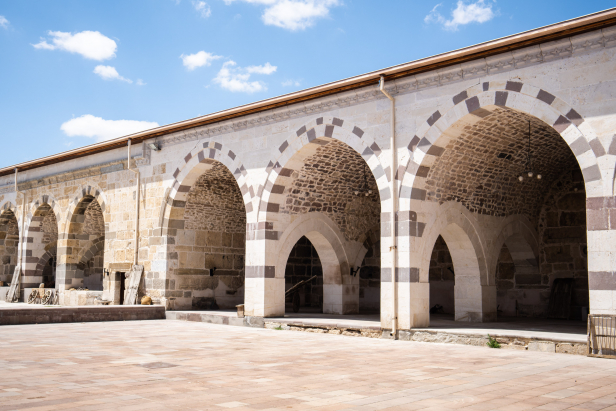
The alternating black and white stripes continue in the interior, especially in the voussoirs of the the arcade that surrounds the open courtyard. The courtyard of Zazadin Han is vast, about twice the size of the covered hall and has numerous rooms and open spaces opening off of it, including a hamam (Turkish Bath), mosque, numerous rooms reserved for important guests, stables, and kitchens.
Subscribe to The Art of Wayfaring
While the year 1235 is given for the construction of the covered portion of the caravanserai, the year 1237 is given for the courtyard portion. The courtyard of Zazadin han is unique in that it consists of two parts; the part closer to the covered hall is original while the portion further from the hall was likely added at a later date as the size of the iwans are different, and there are the remains of a low wall cutting through the courtyard. Whether the 1237 date is for the original courtyard or the later addition is unclear.
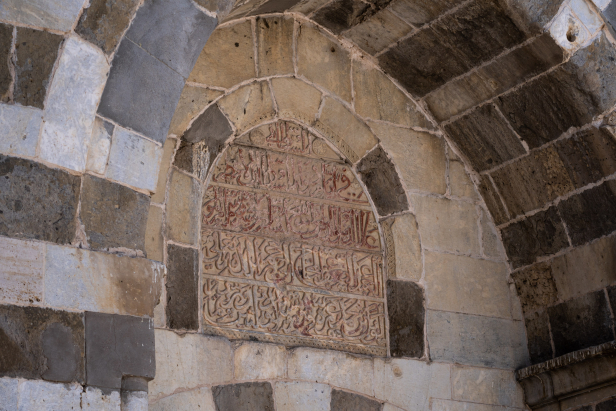
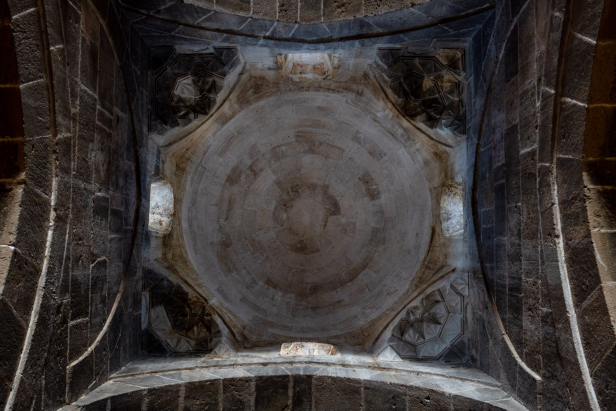
The covered hall portion of the Caravanserai is fronted by a beautiful gate which matches the outer gate. In keeping with the overall size of Zazadin Han, the covered portion of the caravan is quite large, consisting of five vaulted aisles. The center aisle is significantly higher than the rest and topped by a Kümbet vault (a cupola structure with a pyramidal dome set atop a drum) to allow for airflow and light. The original Kümbet had collapsed centuries ago and was replaced by a sheet-metal imitation until the 2017 restoration saw a new authentic dome installed.

How To Get There
General
Zazadin Han sits between the arms of two regional highways a short distance outside the village of Tömek. While there is some bus service to Tömek this will still have you a couple kilometers away from the site of the caravanserai.
Driving from Konya, take the D715 highway north-east, out of the city. On the outskirts you can turn off onto the D300 highway towards Aksaray or continue on the D715. Whichever road you take you’ll see signs for the village of Tömek and brown signs for Zazadin Han roughly 12 kms after the junction. Turn off following the signs and follow the country road for a few kilometers until you see the caravanserai standing alone in the plain. Total distance from Konya city center: 27 kilometers.
For more about car rental and driving in Turkey make sure to read our full drivers guide.
Where To Stay
While Zazadin Han once served travellers as a hotel, you’ve come a few centuries too late and will have to look a little further afield. Most likely you’re not travelling by camel so the journey shouldn’t prove too arduous. Your best bet is to look in the city of Konya where there are lots of quality hotels to choose from ranging from the boutique to large modern hotels with pools, fitness rooms, and saunas.
Other Tips
Planning on visiting Zazadin Han? Make sure to check out nearby Sultanhanı, Obruk Han, and the stunning Seljuk architecture of Konya, the historic Seljuk capital.
Subscribe to The Art of Wayfaring
Have any tips or info to add? Spot any mistakes? We’d love to hear about it.
